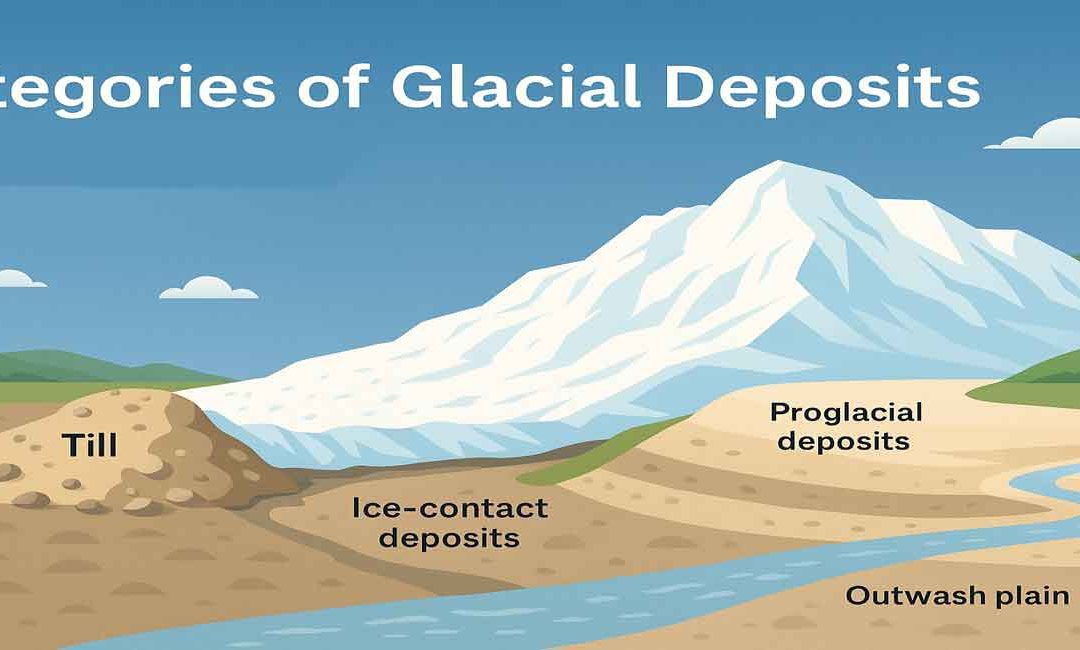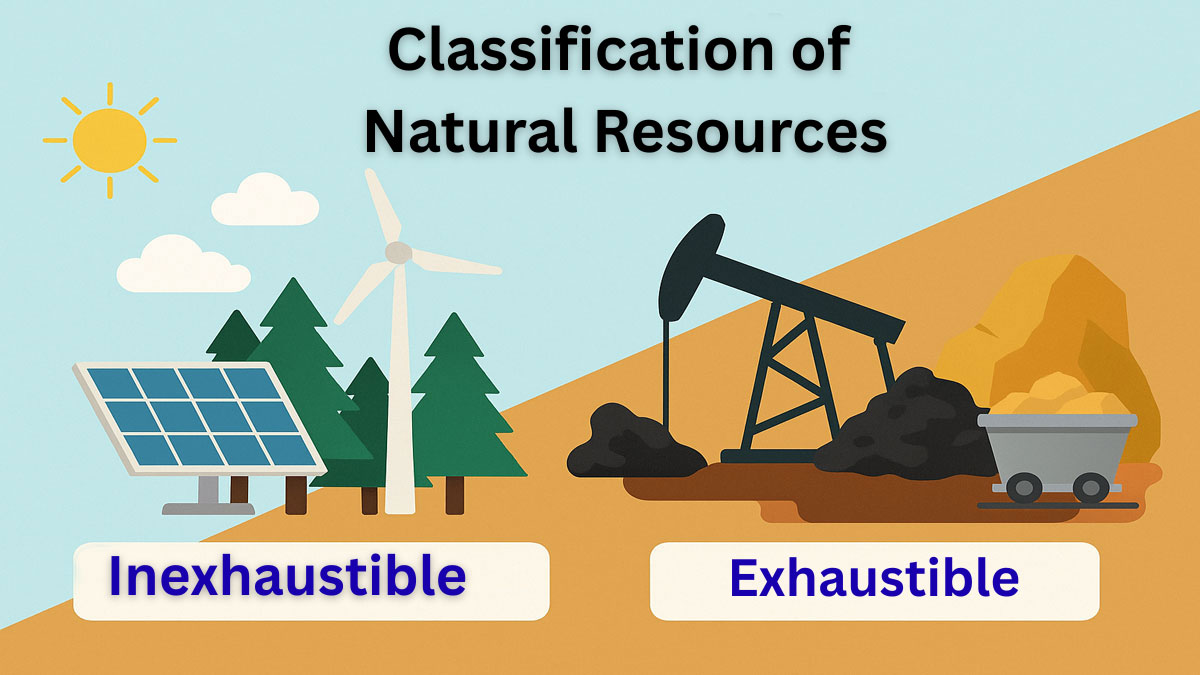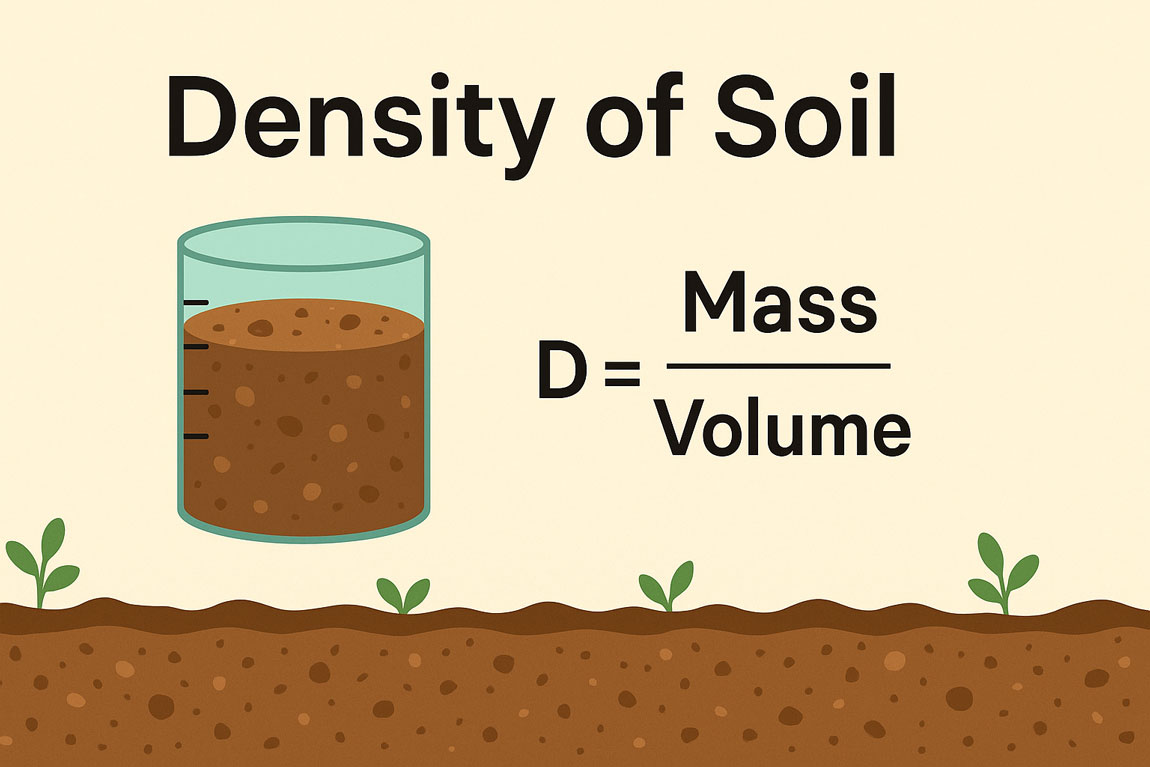The history of glaciation, particularly the Categories of Glacial Deposits, largely depends on the studies of glacial deposits and landforms resulting from the accumulation of these glacial deposits. The degree of stratification is most important in defining the glacial deposits. Ice drifted deposits are not stratified and sorted. Water plays an important role in stratification.
Hence, the ice drifted deposits (moraines) under the glacier or at the terminal zone of a glacier (end moraines and tills) are naturally not sorted and stratified. On the other hand, meltwater deposits in the outwash plain are more or less sorted and stratified.
Categories of Glacial Deposits:
There are mainly two categories of glacial deposits,
1.Unstratified:
(i) Till deposits
2) Stratified deposits:
(i) Ice-contact deposits,
(ii) Proglacial deposits
Till:
When ice advances over bedrock, it picks up all shapes and sizes of eroded materials, as well as the rock flour resulting from glacial abrasion. The deposits laid down directly by ice have hardly suffered much sorting action by water.
Therefore, they have an unsorted and unstratified appearance. The particles are of all size grades from clay to boulders being mixed together in the deposit, with softer erratic’s (e.g. chalk) being clearly striated. These are called till.
There are different kinds of till: 1) Lodgement till, 2) Ablation and flow till, 3) Shearplane till, etc. Lodgement till is laid down at the base of glacial ice during the melting of debris-rich ice. This till will be lodged during ice advance as the load of debris increases and pressure-melting occurs.
In ablation, till the fine sediment grades are sometimes absent, having been removed by surface meltwater streams. In the course of ablation near the margins of glacial ice, silty or clayey till may become heavily charged with water and flow.
Such flow tills are commonly seen in melting end-moraine areas. They will have the appearance of till, but will have been subject to solifluction. The matrix of till sometimes gives evidence of the direction of ice movement.
Ice-contact deposits:
These are the intermediate stratified drift, between unsorted till and well-stratified and sorted outwash. Rapid changes of sedimentation occur near the melting ice. Sudden changes in the grain size and sorting of sedimentation are common, for example, boulders are sometimes inter bedded with sand.
The sediments are often built up against walls of ice, and when this melts, they will be deformed by slumping at the place of ice contact. Deformation may also be caused by ice-push as well as ice-collapse.
Proglacial deposits:
Melt-waters carry outwash from the ice front. The sediment deposited from the melt water depends on the marginal landscape. If it slopes steeply away, no outwash may be deposited as the speed of the melt water is sufficient to carry the load.
In this case melt-water channel may erode away. If the slope is gentle, sediments may be deposited above the local standing water level to form sheet or bands of outwash. These are called Glacio-fluvial deposits.
The outwash may be discharged into an ice-marginal lake to form Glacio-lacustrine deposits or into the sea to form Glacio-marine deposits (West, 1974). Grain size of the deposits depends on the outwash load, whether it is rich in gravel, sand, silt or clay. Grain size decreases towards the distal slope.






